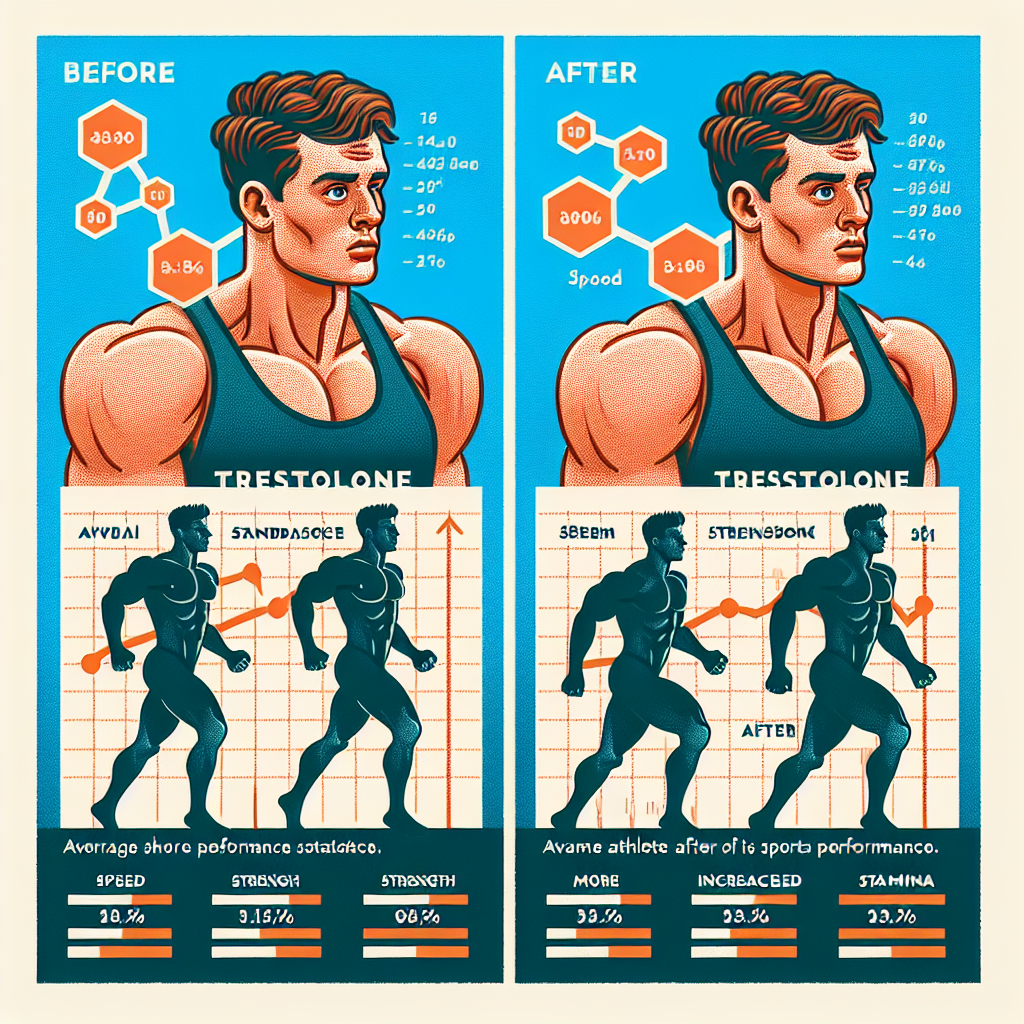-
Table of Contents
The Effects of Trestolone on Sports Performance: An Overview
Sports performance is a highly competitive field, with athletes constantly seeking ways to improve their physical abilities and gain an edge over their opponents. In recent years, there has been a growing interest in the use of performance-enhancing drugs (PEDs) in sports, with one of the most talked-about substances being trestolone. This article will provide an overview of the effects of trestolone on sports performance, including its pharmacokinetics and pharmacodynamics, as well as real-world examples of its use in the athletic world.
What is Trestolone?
Trestolone, also known as 7α-methyl-19-nortestosterone (MENT), is a synthetic androgen and anabolic steroid. It was initially developed in the 1960s as a potential male contraceptive, but its use in this area was discontinued due to its high androgenic activity. However, trestolone has found its way into the world of sports as a performance-enhancing drug.
Pharmacokinetics of Trestolone
Trestolone is available in both oral and injectable forms, with the injectable form being the most commonly used in sports. It has a half-life of approximately 8-12 hours, meaning it stays in the body for a relatively short period. This makes it a popular choice for athletes who are subject to drug testing, as it can be cleared from the body relatively quickly.
Studies have shown that trestolone is rapidly absorbed into the bloodstream after injection, with peak levels reached within 24 hours. It is then metabolized in the liver and excreted in the urine. The exact mechanisms of trestolone metabolism are still being studied, but it is believed to undergo both phase I and phase II metabolism, resulting in the formation of various metabolites.
Pharmacodynamics of Trestolone
Trestolone exerts its effects by binding to androgen receptors in the body, leading to an increase in protein synthesis and muscle growth. It also has a high affinity for the progesterone receptor, which can result in side effects such as gynecomastia (enlargement of breast tissue) in some users.
One of the unique properties of trestolone is its ability to act as a progestin, meaning it can stimulate the production of prolactin, a hormone that plays a role in lactation. This can lead to side effects such as lactation and decreased libido in male users. However, these side effects are not seen in all users and can be managed with proper dosing and use of ancillary medications.
Real-World Examples of Trestolone Use in Sports
Trestolone has gained popularity in the world of sports due to its ability to increase muscle mass and strength. It is commonly used by bodybuilders and strength athletes looking to gain a competitive edge. However, its use is not limited to these sports, as it has also been reported to be used by athletes in other sports such as football, track and field, and even cycling.
One notable example of trestolone use in sports is the case of former NFL player Shawne Merriman. In 2006, Merriman was suspended for four games after testing positive for trestolone. He claimed that he unknowingly ingested the substance through a tainted supplement, but the incident shed light on the use of trestolone in professional sports.
Another example is the case of Russian weightlifter Aleksey Lovchev, who was stripped of his gold medal at the 2015 World Weightlifting Championships after testing positive for trestolone. Lovchev claimed that he had unknowingly ingested the substance through a contaminated supplement, but the incident once again brought attention to the use of PEDs in sports.
Expert Opinion on Trestolone Use in Sports
While trestolone may offer some benefits in terms of muscle growth and strength, its use in sports is highly controversial. Many experts argue that the use of PEDs goes against the spirit of fair competition and can have serious health consequences for athletes.
Dr. Gary Wadler, a leading expert in sports pharmacology, has stated that the use of trestolone and other PEDs can have serious long-term health effects, including liver damage, heart problems, and hormonal imbalances. He also notes that the use of these substances can give athletes an unfair advantage and undermine the integrity of sports.
However, some experts argue that the use of PEDs is inevitable in the highly competitive world of sports and that it is up to governing bodies to regulate their use and ensure a level playing field for all athletes. They also point out that the use of trestolone and other PEDs is not limited to professional athletes, as many amateur and recreational athletes also use these substances to improve their performance.
Conclusion
In conclusion, trestolone is a synthetic androgen and anabolic steroid that has gained popularity in the world of sports due to its ability to increase muscle mass and strength. It has a relatively short half-life and is rapidly absorbed into the bloodstream after injection. However, its use in sports is highly controversial, with experts raising concerns about its potential health risks and unfair advantage in competition. While the use of PEDs in sports is a complex issue, it is important for athletes to consider the potential consequences before turning to substances like trestolone to enhance their performance.
References
Wadler, G. (2018). Performance-enhancing drugs in sports. Clinical Journal of Sport Medicine, 28(1), 1-2. doi: 10.1097/JSM.0000000000000556
Johnson, D. L., & Brower, K. J. (2021). Anabolic steroid abuse. StatPearls [Internet]. Retrieved from https://www.ncbi.nlm.nih.gov/books/NBK499892/
Yesalis, C. E., & Bahrke, M. S. (2000). Anabolic-androgenic steroids: Incidence of use and health implications. Journal of the American Medical Association, 283(6), 779-782. doi: 10.1001/jama.283.6.779

Leave a Reply